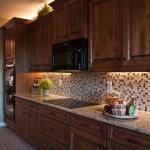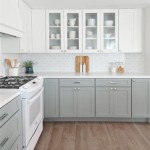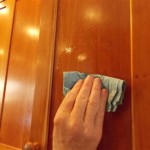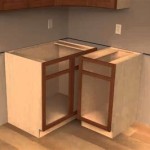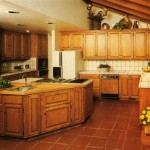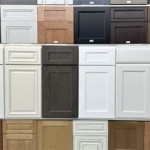How Much Are White Oak Kitchen Cabinets? A Comprehensive Cost Breakdown
White oak kitchen cabinets have become a popular choice for homeowners seeking a balance between durability, aesthetic appeal, and versatility. Their light color, prominent grain pattern, and ability to complement various design styles make them a sought-after upgrade for kitchens of all sizes. However, before embarking on a kitchen renovation with white oak cabinets, understanding the associated costs is crucial. This article provides a detailed breakdown of the factors influencing the price of white oak kitchen cabinets, helping you make informed decisions and budget effectively.
Estimating the cost of white oak cabinets involves considering several elements, each contributing significantly to the final price. These elements encompass material costs, construction methods, door styles, finishes, hardware, and installation. A comprehensive understanding of these factors is necessary to avoid unexpected expenses and ensure the project aligns with your financial resources.
Factors Influencing the Cost of White Oak Kitchen Cabinets
Several key factors determine the overall cost of white oak kitchen cabinets. These include the type of white oak used, the cabinet construction method, door style, finish, hardware, and installation costs. Understanding each of these factors is crucial for accurately estimating the overall project budget.
1. Type of White Oak: The grade and cut of the white oak significantly impact the material cost. Lumber is graded based on its appearance, with higher grades exhibiting fewer knots and imperfections. This translates to higher price points. Furthermore, the cut of the wood (e.g., plain-sawn, quarter-sawn, rift-sawn) also affects the cost and appearance. Quarter-sawn oak, for example, is more stable and displays a more distinctive grain pattern, making it more expensive than plain-sawn.
Plain-sawn white oak is the most common and economical cut. It’s characterized by a cathedral-like grain pattern on the wider faces of the boards. Quarter-sawn white oak is cut at a 90-degree angle to the growth rings, resulting in tighter grain patterns and increased stability, minimizing warping and cupping. Rift-sawn white oak is cut at a slightly different angle than quarter-sawn, producing even straighter lines and a consistent, linear grain. Rift-sawn is often the most expensive of the three common cuts.
The choice between solid white oak and white oak veneer over plywood also affects the price. Solid wood cabinets are inherently more expensive due to the higher material costs and more intricate construction required. Veneer cabinets, on the other hand, consist of a thin layer of white oak adhered to a plywood core. This option provides the appearance of solid wood at a lower price point, but it may not be as durable or long-lasting as solid wood.
2. Cabinet Construction Method: The way in which the cabinets are constructed also plays a significant role in the overall cost. Common construction methods include: stock, semi-custom, and custom. Stock cabinets are pre-built in standard sizes and configurations. This is the most affordable option, but it offers limited customization and design flexibility.
Semi-custom cabinets offer a balance between affordability and customization. They are typically based on stock cabinet designs, but with options for modifications in size, door styles, and finishes. This allows for a more tailored look without the full cost of custom cabinetry. Custom cabinets are built to precise specifications, offering unlimited design possibilities. This is the most expensive option, but it allows for complete control over the style, size, and configuration of the cabinets to perfectly fit the space and meet specific needs.
The type of joinery used in cabinet construction also influences the price and durability. Dovetail joints, known for their strength and durability, are more expensive to produce than simpler joints like butt joints or dado joints. Similarly, solid wood drawers with dovetail construction are generally more expensive than drawers made with particleboard or other less durable materials.
3. Door Style: The design of the cabinet doors greatly impacts the overall aesthetic and cost. Shaker-style doors, known for their clean lines and simple design, are a popular and relatively affordable option. Raised-panel doors, with their more ornate detailing, typically cost more. Other styles, such as slab doors (flat, minimalist doors), or glass-front doors, also have varying price points depending on the materials used and the complexity of the design.
The complexity of the door style also affects the cost of finishing. Doors with intricate carvings or profiles require more time and effort to finish, which can increase the overall price. The type of wood used in the door construction can also influence the price, as some wood species are more expensive to work with or require specialized finishing techniques.
4. Finish: The finishing process significantly affects the look, durability, and cost of white oak cabinets. Natural finishes that highlight the wood's natural grain are often less expensive than painted or stained finishes that require multiple coats and more labor. Painted finishes, particularly those involving multiple layers of primer and paint, can be more costly due to the additional materials and labor involved.
The type of finish also impacts the price. Catalyzed conversion varnishes, known for their durability and resistance to moisture and chemicals, are generally more expensive than simpler lacquer or polyurethane finishes. The application method can also affect the price if a spray finish is used which requires more equipment or skill. The use of specialty finishes, such as distressed or glazed finishes, can further increase the price due to the added time and materials involved.
5. Hardware: The choice of hardware, including knobs, pulls, hinges, and drawer slides, can significantly impact the overall cost of white oak cabinets. High-end hardware made from solid brass, stainless steel, or other premium materials can be quite expensive. Basic hardware made from less expensive materials can help keep costs down. Soft-close hinges and drawer slides, which provide smooth and quiet operation, also add to the cost.
The style and finish of the hardware also play a role in the price. Intricately designed or custom-made hardware is typically more expensive than standard, mass-produced options. The cost of hardware can easily add up, especially in a large kitchen with many cabinets and drawers, so it's important to consider this aspect when budgeting for the project.
6. Installation Costs: Professional installation is crucial for ensuring the proper fit and functionality of white oak cabinets. Installation costs vary depending on the complexity of the project, the size of the kitchen, and the location. Simple installations involving stock or semi-custom cabinets are generally less expensive than complex installations involving custom cabinets or significant modifications to the existing kitchen layout.
The cost of installation may also include the removal and disposal of old cabinets, plumbing or electrical work, and any necessary modifications to the walls or floors. It's important to obtain detailed quotes from several qualified installers to compare prices and ensure that all necessary work is included in the estimate. Some installers charge by the linear foot of cabinetry installed, while others charge an hourly rate or a fixed price for the entire project.
Estimating the Cost Range of White Oak Kitchen Cabinets
Given the various factors that influence the cost of white oak kitchen cabinets, providing a precise estimate is difficult without knowing the specific requirements of the project. However, it is possible to provide a general cost range based on the level of customization and quality of materials.
For stock white oak cabinets, the cost can range from $150 to $400 per linear foot. This option is the most budget-friendly but offers limited design flexibility. Semi-custom white oak cabinets typically range from $400 to $800 per linear foot, providing a balance between affordability and customization. Custom white oak cabinets can range from $800 to $1,500 or more per linear foot, offering unlimited design possibilities and the highest level of quality.
These figures are estimates for the cost of the cabinets only and do not include the cost of installation, hardware, countertops, appliances, or other kitchen renovation expenses. It's important to factor in these additional costs when budgeting for the overall project.
Ways to Save Money on White Oak Kitchen Cabinets
Despite the initial investment, saving money on white oak kitchen cabinets is possible without compromising quality or aesthetic appeal. One strategy is to opt for semi-custom or stock cabinets instead of fully custom cabinets. This can significantly reduce the cost while still allowing for some degree of personalization.
Consider using white oak veneer for some parts of the cabinet, such as the sides or backs, rather than solid white oak. This can reduce the overall material cost without significantly affecting the appearance or durability of the cabinets. Another approach is to choose simpler door styles and finishes, which require less labor and materials. Shaker-style doors with a natural finish are a popular and cost-effective option.
Shopping around and comparing quotes from multiple cabinet makers or retailers is also crucial. This allows you to find the best prices and negotiate for discounts. In some cases, purchasing cabinets during sales or promotional periods can also result in significant savings. Consider installing the cabinets yourself if you have the necessary skills and experience. However, if unsure, hiring a professional installer is recommended to ensure the proper fit and functionality of the cabinets.
Another way to potentially save money is to reface existing cabinets with white oak veneer or new white oak doors. Refacing involves replacing the doors and drawer fronts while keeping the existing cabinet boxes. This can be a more cost-effective option than replacing the entire cabinet system. However, refacing is only a viable option if the existing cabinet boxes are in good condition and structurally sound.
Finally, consider using less expensive hardware. While high-end hardware can add a touch of luxury to the kitchen, it can also significantly increase the cost of the project. Choosing more affordable hardware options can help keep the budget in check without sacrificing functionality or aesthetics.

White Oak Cabinets Remodel Master Design Cabinetry

White Oak Cabinets New Kitchen Trends On The Rise Remodel Modern

Kitchen Renovation How To Mix White And Stained Oak Cabinets Home Bunch Interior Design Ideas

Milk Oak White Kitchen Cabinets

Succeeding With Quartersawn White Oak Cabinets

Rising Stars White Oak Kitchens Bandddesign Com

23 Kitchens With White Oak Cabinets Coco Lapine Designcoco Design

How To Get Beautiful White Oak Cabinets For Less

White Oak Kitchen Ckf

Bleached White Oak Cabinets Star In This Two Tone Kitchen
Related Posts



